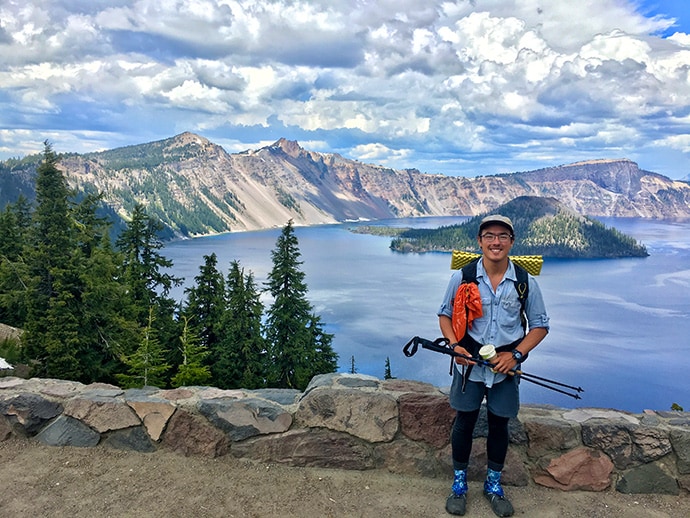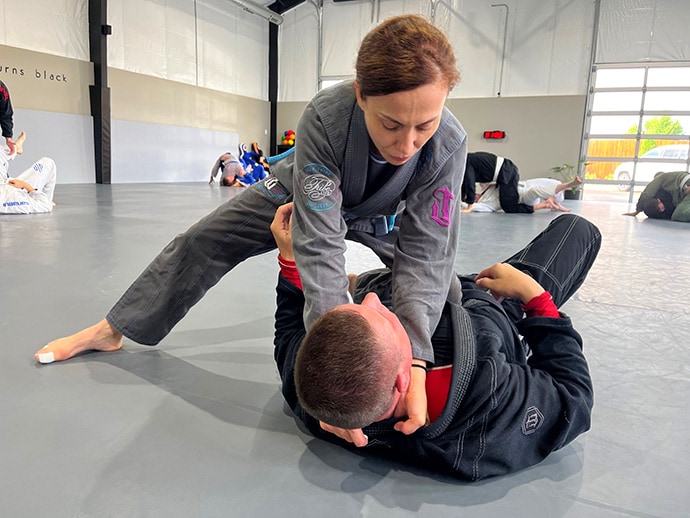"Helping people."
Perhaps you've heard that one before — it's consistently one of the primary reasons why people enter the medical field. Three quarters of respondents listed "helping people" as the top motivator for their career choice in an American Medical Association survey of 1200 physicians, residents, and medical students. A recent Medscape Medical News survey put it in the top three. (See also: This Medscape Medical News report on The Best Things About Being a Doctor.)
At some point, however, that motivator will be challenged. With burnout rates running a fever, bureaucracy, and other entanglements that have nothing to do with "helping people," you need more than just that one thing that brought you to the field. What will carry you through?
Medscape Medical News spoke with three physicians who did something outside the clinic unrelated to medicine and experienced a mindset shift that brought their work perspective into sharper focus.
You'll see this takes different forms for different folks — from the mundane to the dramatic — but the common thread is it worked. Each has discovered a more specific, and therefore more sustainable, sense of meaning in medicine.
Taking a Really Long Walk
"How's Mikey doing?" Growing up, Eric Montgomery, MD, would regularly ask his friend Ian Gustafson this question. Gustafson's younger brother, Mikey, had been diagnosed with medulloblastoma, a cancerous tumor in the cerebellum that affects balance, coordination, and movement. On good days, Mikey would join them in basketball games or be bouncing on the trampoline nearby. On bad days, he was unable to play at all. Mikey was in remission for a few years, but diffuse intrinsic pontine glioma (DIPG) ultimately took his life.

Montgomery decided to honor Mikey and raise money for pediatric cancer research through a long-distance hike called Hike for Hope. Montgomery had already been accepted to medical school, so he chose to take a gap year in 2018 to complete the hike before starting his training. In preparation, Montgomery sat down to research the disease, its outcomes, and the options for patients.
"It immediately struck me both for the personal story as well as the scientific interest and the need for help," Montgomery said. "I'd already seen how it impacts families, and the more I learned about the disease, it checked all the boxes in terms of what I hoped to dedicate my career towards."
Montgomery's Hike for Hope spanned the Pacific Crest Trail, which runs 2650 miles from Mexico to Canada through California, Oregon, and Washington. The journey took 4 months. Montgomery hiked most of the trail with a group, but for 5 weeks, he walked alone. Along the way, he encountered an avalanche, a bear, intense heat, scorpions, rattlesnakes, and a lot of isolation. In quiet moments, and particularly through the challenges, Montgomery thought about Mikey and all he had to endure.
"A major theme throughout my life is delayed gratification," Montgomery said. "When you're doing a long hike, hopefully you get to the top or you see a cool view. But the trail is 2650 miles long, and most of those miles are pretty mundane and boring. It's not all sexy like Instagram makes it out to be. But the experience really reaffirmed to me how those more mundane moments, the boring moments, are the work you're putting in towards a final goal."
As Montgomery learned about DIPG and met others who were passionate about finding a cure, he reflected on which path he wanted to take during and beyond medical school. By the time he got up to Canada, Montgomery knew that his mission in life was to treat pediatric patients with brain tumor and seek cures for rare cancers like DIPG in particular. The Hike for Hope ultimately raised more than $185,000. Montgomery went on to research brain cancers in medical school and is now doing a residency in neurosurgery.
"I feel that I have a strong sense of purpose and a reason why I entered medicine in the first place," he said. "My relationship with Mikey and that aspect of the hike has continued to play a strong role and be a massive inspiration. It's important to really take the time to reflect on why exactly you're designed to pursue this route."
The Teacher Becomes the Student
When Meriem Bensalem-Owen, MD, signed up her 5-year-old son for taekwondo classes, hoping they would help with his shyness and anxiety, he insisted she practice alongside him. She agreed. But what sounds like a basic "mom tries martial arts" story is more than that.

Even after her son rose to the challenge and earned his black belt, Bensalem-Owen continued, dabbling in other martial arts until she landed on Brazilian jiu-jitsu.
That's when everything changed.
"Some people do martial arts to build confidence," Bensalem-Owen said. "Some people do it because they want to be able to defend themselves. Some people do it for the fitness aspect. I do it because it's very intellectually challenging, especially Brazilian jiu-jitsu. It's like playing chess, but it's three-dimensional chess, where your opponent makes a move and you respond with another move. You can't be distracted."

Bensalem-Owen is a professor of neurology at the University of Kentucky, Lexington, Kentucky, and the director of the university's epilepsy program. A major draw to martial arts is that she — usually the teacher — gets to become the student. What she learns in the dojo helps her in the classroom and in the world of academia, which she says can be competitive and cutthroat at times. She has learned not to compare herself with her fellow jiu-jitsu students or her academic colleagues and to instead focus on her own personal path.
"It's continuous learning," she said of the martial art. "You know it's going to be a long journey, but you just take your time and you try to be better than the previous day. It's really a battle against yourself, against your fears. Some people may have more time, so they can train more, and if I compare myself to them, I'll be miserable."
Bensalem-Owen describes martial arts, and particularly Brazilian jiu-jitsu, as "mindfulness combined with physical activity." She now carries this moment-to-moment focus into her work life, particularly for adaptability through challenging moments. She finds that building physical flexibility in the dojo helps her exercise emotional flexibility with patients and students in the clinic and the classroom, which helps alleviate her stress levels. Whether her interactions at the clinic play out as she wants them to, whether she "submits" her jiu-jitsu opponent or gets submitted, Bensalem-Owen has learned she is ultimately grappling with herself.
"There are a lot of things that can be upsetting at work. Brazilian jiu-jitsu helps me take it one step at a time," she said. "It helps you learn how to adapt, to keep composure, and just not give up. Sometimes the outcomes are not what we expected for our patients, but all you can do is show up and do your best."
Zen and the Art of Neurosurgery
When Patrick Codd, MD, was a teenager, he experienced an existential crisis he describes as "a long, dark night of the soul." He was asking himself the big questions: "What is this all about, and what is the world, and who am I?"
Amidst this "swirling torrent," Codd came across Robert M. Pirsig's influential book, Zen and the Art of Motorcycle Maintenance. It led him to start practicing Zen Buddhism at the age of 18, right before he started his journey through Caltech, Pasadena, California, and Harvard Medical School, Boston.
"The practice of Zen for me really evolved as a parallel to the practice of medicine," Codd said. "I was learning how to be a doctor and all the while practicing Zen and diving into meditation and looking at these aspects of, 'What does it mean to be a human being that's going to get sick, going to get old, going to die? What does that mean for me? What does that mean for the patients that I'm treating?'"
Codd was ordained as a priest of Boundless Way Zen in 2017. Today, in his work as a neurosurgeon at Duke, he is still asking the big questions. Treating patients with brain afflictions that can alter their personalities, relationships, and perceptions, he feels that Zen helps him deal with the fallout.
"The practice of Zen is one of deeply turning toward, 'What is this thing I call 'I'? What is this 'self', this thing that I think is so permanent and real and must never change?'" Codd said. "In fact, it's all changing, all the time." Exploring these issues of identity helps him to "hold space compassionately" when patients confront profound changes from neurologic illness.
Codd finds the Zen approach to suffering and mortality invaluable when talking to families of patients who are presenting with a tumor, have suffered a stroke, or have lost their lives. It allows him to reach beyond the clinical view of death and into the spiritual dimension during those conversations.
"Zen practice is helping me with the ability to sit in that space and have a conversation with that family," Codd said, "not like a doctor with a white coat sitting across the table, but as humans sitting amidst suffering. All of us recognizing in that moment that this is our human legacy; this is our human treasure house of change and illness and sickness and ultimately death; this is the path we all walk on."
Codd says he certainly still experiences frustration, anxiety, anger, and fear. Zen practice does not make human emotions vanish. Still, he finds that merely acknowledging these things as they come up, rather than turning away from them, lessens their weight.
Of course, it can be difficult to sit quietly every day given a physician's demanding schedule. Codd does not meditate for a set amount of time each day but rather approaches Zen as an ongoing, if fluctuating, practice.
"There are days when my meditation is taking a walk outside on my way to the car or when I'm taking a few breaths in the elevator between seeing patients," he said. "We are pulled in a million different directions all day long, and finding that little moment, that single breath of pause and reflection and grounding, can have immense benefit."

